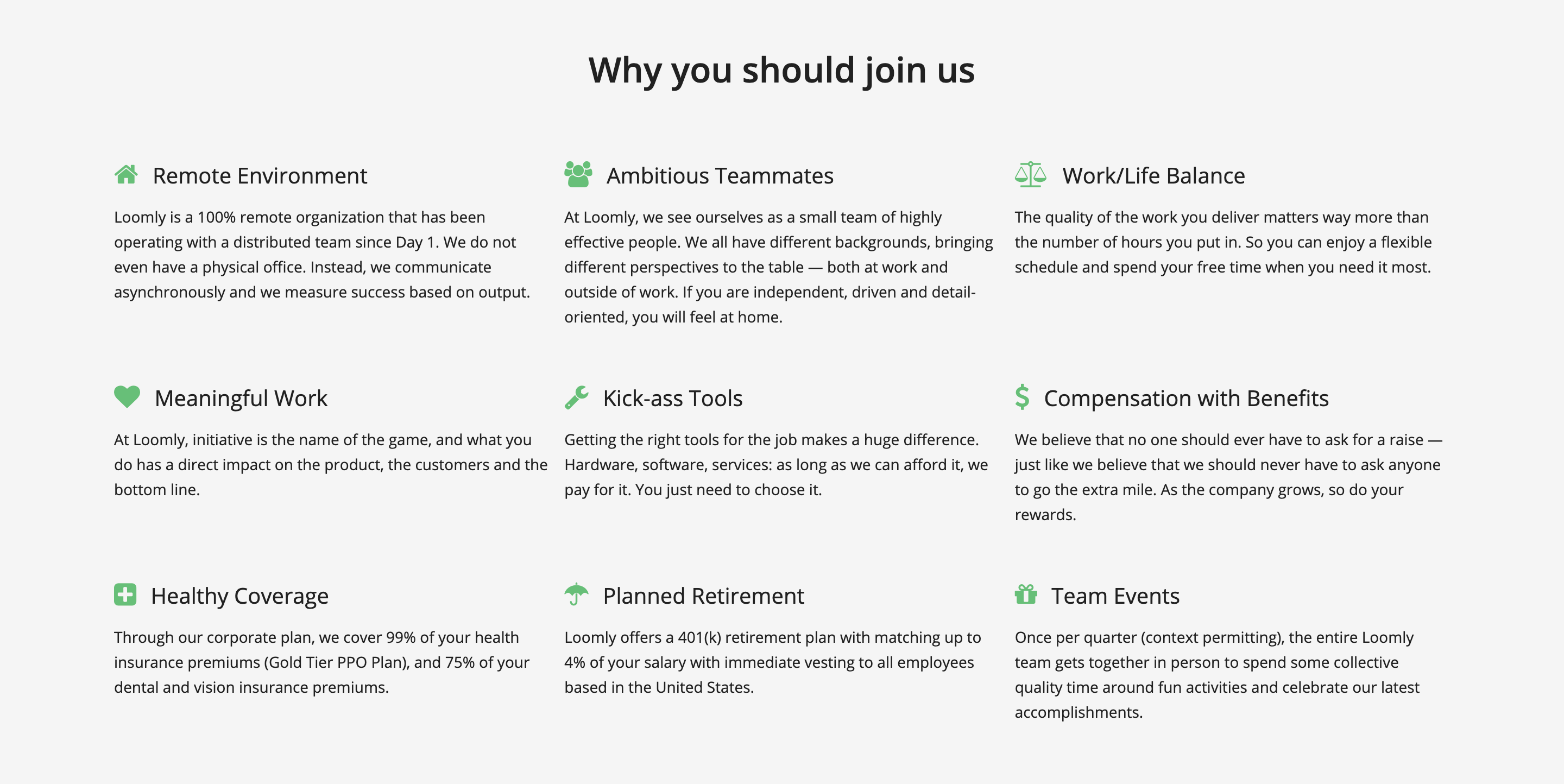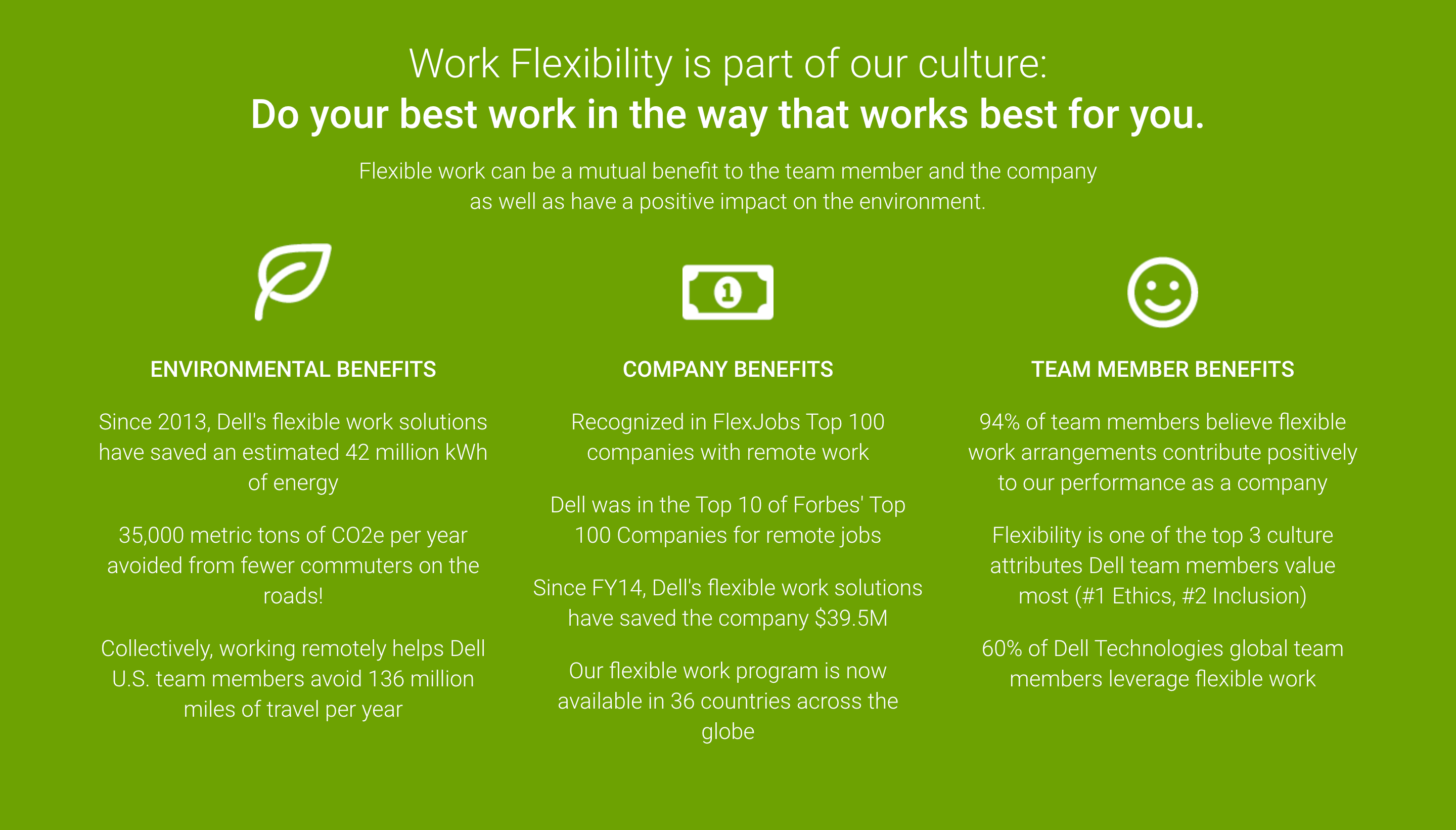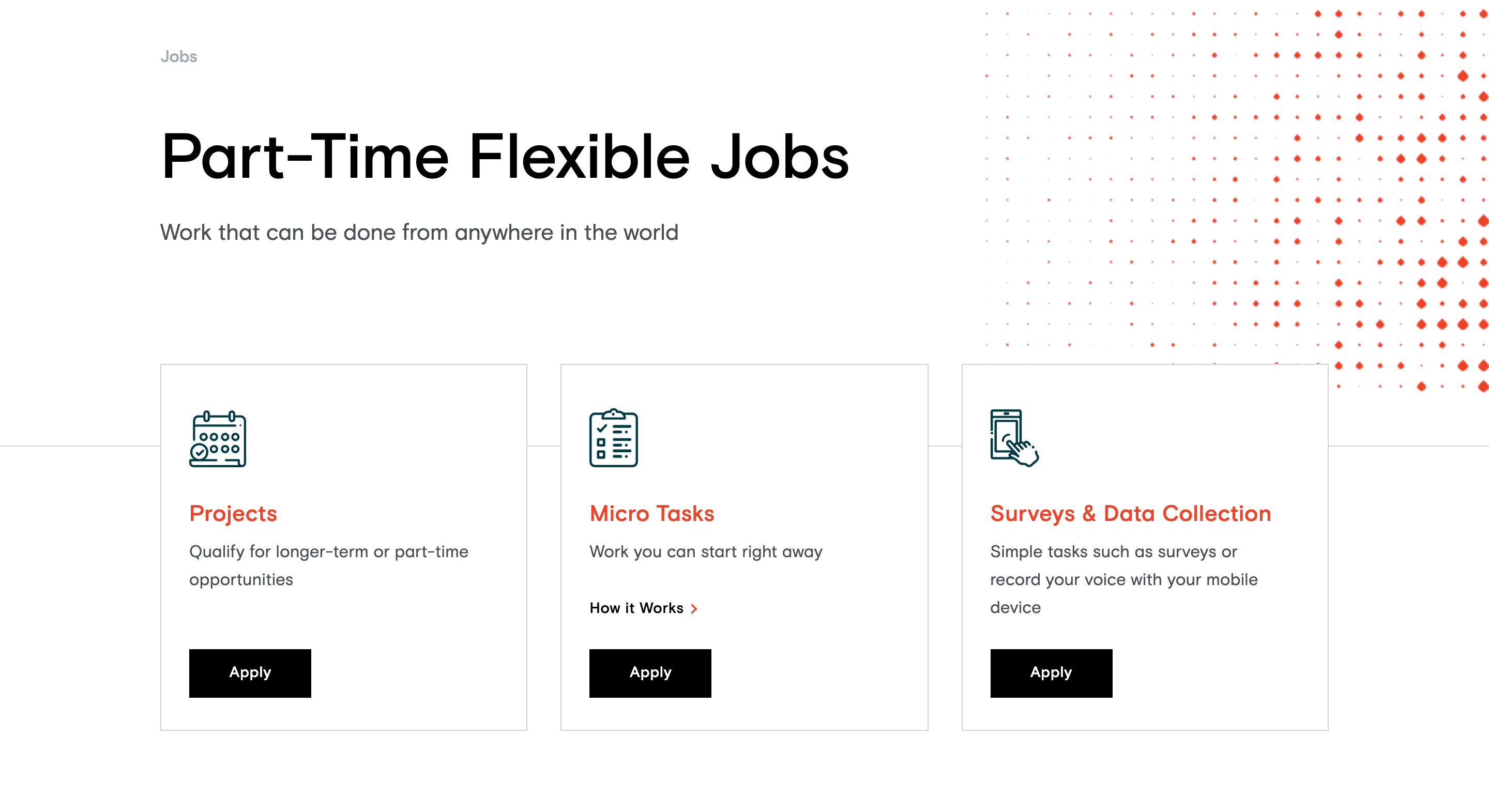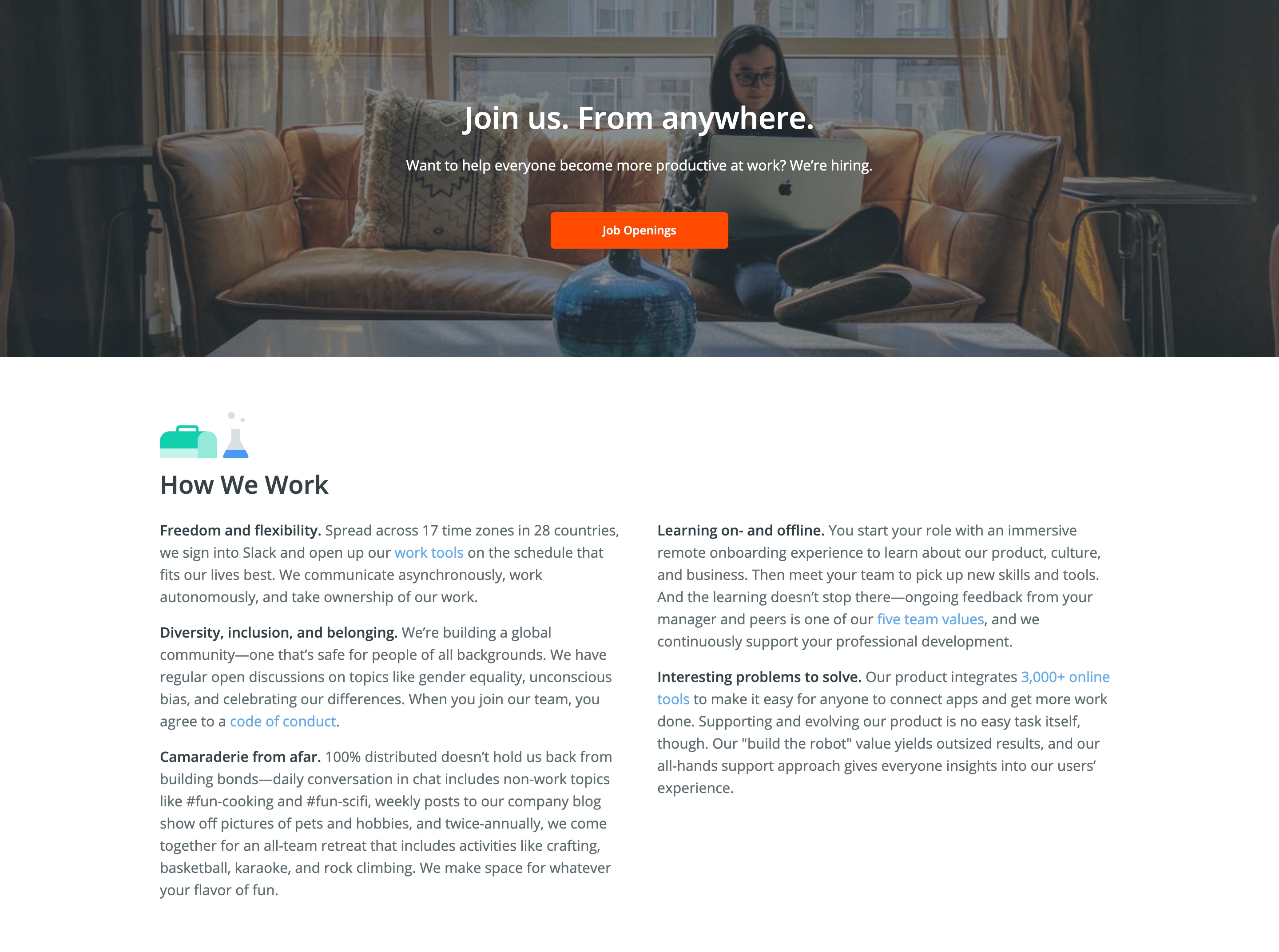Before the coronavirus pandemic, many organizations were resistant to the idea of remote work.
A year later, and things have changed dramatically. Research from McKinsey shows there will be four to five times more remote work than before the pandemic.
Naturally, some companies, like Goldman Sachs, are adamant staff will return to the office, while others, like Twitter, are now 100% remote-only.
But somewhere in the middle, a new concept is gaining momentum: the hybrid office. Workers have more freedom than an on-site setting but still benefit from the structure of having access to an office when necessary.
Flexible work, including remote work, flextime, and part-time hours, is nothing new. But it doesn’t suit everyone. In fact, some of the downsides of the pandemic-enforced WFH policy include fatigue, burnout, and a work-life imbalance.
So, how do you decide what type of flexible work arrangements to use and which companies have made a success of flexible work?
That’s what this guide is all about.
You can jump to a specific section or read all the way through:
- What is flexible work?
- What are the different types of work arrangements?
- What are the benefits of flexible work?
- What are the downsides of flexible work?
- Examples of companies that have successfully implemented flexible work
- How to implement a flexible work program
What is Flexible Work?
Flexible work is a type of working arrangement with a degree of flexibility on how long, where, when, and at what times employees work.
The idea behind flexible work is to help manage work-life balance and can reduce employee stress and increase overall job satisfaction.
It’s helpful to parents managing work and family responsibilities and is also beneficial to those who have a medical condition or an intensive caregiving responsibility.
On the flip side, some employees are wary of flexible work arrangements as they fear the lack of visibility – “Out of sight, out of mind” – could negatively affect their career.
Flexible work arrangements can be either formal or informal. Some companies amend the written employment contract when new working practices are implemented or include flexible working policies in their handbooks. However, other flexible working options, such as working at home (WFH), might be offered informally by an employee’s line manager.
What are the Different Types of Flexible Work Arrangements?
There are various kinds of flexible work arrangements, including flextime, telecommuting, job-sharing, and compressed schedules.
However, not all types are manageable or worthwhile for every organization, so you’ll need to assess what kind of flexible work arrangements meets your needs.
Here’s a selection of the different types of flexible work arrangements:
Flextime
Under a flextime (aka flexitime) arrangement, employees work a standard number of “core hours” within a specified period (e.g. between 11 am and 3 pm) but can choose their starting and ending times from a range of available hours (e.g. between 5:30 am and 7:30 pm). For example, see the Missouri State University Flextime arrangements.
Flexplace
A flexplace arrangement allows staff to determine where they will work, including from home or some other non-office location. Telecommuting is the most common example of flexible work arrangements.
Compressed schedule
Under a compressed schedule arrangement, the standard workweek is compressed into fewer than five days. For example, some employers implement a four-day workweek of 10-hour days or a three-day workweek of 12-hour days. Another approach is the 9/80 schedule, in which employees work 80 hours in nine days and have one day off every other week.
Annual hours
Like the compressed workweek, the total number of hours to be worked over the year is fixed, but there is a variation through the year in the length of the working day and week.
For example, accounting firms may ask employees to work longer hours during peak periods and then use the accrued hours to leave early on some days or even take a day off to balance their hours.
Part-time work
Part-time work is a common flexible work arrangement used when employees are contracted to work anything less than full-time hours. Part-time work can attract students, parents of young children, older workers, and others who need or want to work but don’t wish to work a full-time schedule.
Term-time work
Term-time work allows employees, especially parents of school-age children, to work on a permanent contract but take paid/unpaid leave during school holidays.
Job sharing
Under these arrangements, two people voluntarily share the duties and responsibilities of one full-time position, with both the salary and benefits of that position prorated between the two individuals.
Extended leave
Extended leave gives employees greater flexibility in terms of requesting longer periods away from work without losing their rights as employees. Extended leave, which can be granted on either a paid or unpaid basis, is used for various reasons, including career breaks or sabbaticals, education, community service, family problems, and medical care (the latter two reasons are now largely covered by the terms of the Family and Medical Leave Act).
Phased retirement
Under these arrangements, the employee and employer agree to a flexible schedule in which the employee’s full-time work commitments are gradually reduced over a period of months or years.
Partial retirement
A partial (or semi) retirement program allows older employees to continue working on a part-time basis, with no established end date.
What are the Benefits of Flexible Work?
Flexible work arrangements offer numerous benefits for both employees and employers, including:
- Attracting new employees.
- Enhancing staff morale.
- Managing employee attendance and reducing absenteeism.
- Retaining employees and reducing staff turnover.
- Increasing employee autonomy boosts productivity.
- Creating a better work/life balance for employees.
- Allowing employees to care for family members (young, elderly, and sick).
- Extending customer service hours, which enhances the company image.
- Allowing for business continuity during emergency circumstances such as a weather disaster or pandemic.
- Allowing companies to match the peaks and troughs of production activity.
- Minimizing harmful impact on global ecology. (Some flexible work arrangements can contribute to sustainability efforts by reducing carbon footprints).
What are the Downsides of Flexible Work?
There are also downsides to implementing flexible work, including:
- Not always appropriate for all people, jobs, or industries.
- Programs are not relevant to employees’ real needs/wants.
- Specific groups of employees can get treated as “second class” citizens.
- Some employees may lack the discipline or organization to self-govern and may “abuse” the system.
- Highlighting senior management’s resistance to change.
- Control issues, especially in terms of supervision of work.
- Working as a remote team with different schedules, key personnel may not be available when needed.
- Maintaining safety and security of personnel and data.
- Removing a program that no longer works or is no longer relevant can hurt morale, even if only a few employees were using it. Employers should consider phasing out unproductive programs gradually and replacing them with suitable alternatives.
- Poorly managed flex schemes can cause overhead costs to increase, customer service to suffer, and manufacturing output to decrease.
Examples of Companies that have Successfully Implemented Flexible Work
Here are five companies that have successfully implemented a flexible work program.
Loomly
Loomly is a 100% remote organization that has been operating with a distributed team since it was founded. There’s no physical office – instead, the staff communicates asynchronously using Slack.

Success is measured on the quality of the work employees deliver rather than the number of hours they put in. So they can enjoy a flexible schedule and spend their free time when it’s needed most.
Dell
Dell, one of the world’s largest computer and technology firms, has been a pioneer in flexible work scheduling. Since 2009, when the company started its Connected Workplace program, employees can work remotely some or all of the time and are encouraged to get the work done in whatever way suits them best.

The company says the program is increasingly popular, with 60% of its global workforce now taking advantage of flexible work and reporting a Net Promoter Score (NPS) that’s typically 20% higher than those who don’t.
From day one, the HR department worked with the IT and facilities teams to make sure all employees had the proper training, technology, and collaboration tools, like Slack, Microsoft Teams, and Airtable, so they can stay in touch and be productive no matter where they are.
With more people working remotely, Dell doesn’t need as much office space — netting the company $12 million in annual savings since 2014.
UnitedHealth Group
UnitedHealth Group, the parent organization of UnitedHealthcare and Optum, is one of the world’s leading diversified health care companies and the largest healthcare company in the world by revenue. It claims its “virtual work environment” provides work/life flexibility to more than 25% of its employees, with telecommuting options for auditors, analysts, medical coders, and more.

Appen
Machine learning company Appen currently employs 350 full-time employees with flexible work options located in seven countries, plus over one million global contractors who work remotely.
Appen discovered that while the team liked the flexibility, it could sometimes leave them feeling isolated. So it invested in different tools like video conferencing, instant messaging, and document collaboration solutions to create a more connected, collaborative culture.

The results were dramatic. In one year, Appen’s attrition rate dropped by 5%. And today, 80% of the company’s core workforce say they’re satisfied with their jobs.
Zapier
Zapier, a company that offers integration tools for web applications, has been a thought leader in remote work for years. They even provide a guide for companies looking to enable or tweak remote work policies.

Zapier’s 250+ employees are free to work from wherever they like, and the company claims its team is distributed across 17 time zones in 24 countries worldwide. As a remote-work pioneer, the company values flexibility and transparency to get the job done right.
How to Implement a Flexible Work Program
Looking to launch a flexible work program in your company? Here’s what you need to consider.
1. Decide why you want a flexible work program
Before you do anything, you need to decide why you want a flexible work program. Just because other organizations are implementing flexible work doesn’t mean you have to follow suit. Ask yourself:
- Why do we want a flexible work program?
- What do we hope to achieve?
Research the pros and cons of implementing a flexible work program in your company. Weigh up what the business requires to operate successfully compared with what employees may want. And assess whether your workforce is motivated to succeed in a flexible work environment.
2. Define the scope of the flexible work program
Not all flexible work arrangements are suitable for all companies. For example, while remote work might save on office space, it won’t work if your staff need to work face-to-face with customers.
At this stage, it’s a good idea to consult with employees and managers to see what type of flexible arrangements they’d like to see in your company. Conduct surveys and run focus groups to encourage informal discussions. (This initial feedback also gives you a flavor of how well flexible work will be received).
You can also reach out to other similar organizations for advice on how they built their flexible work program.
Based on your consultations, select which type of flexible work arrangements to include in your program:
- Remote work
- Hybrid work
- Flextime
- Compressed schedule
- Part-time work
- Job sharing
3. Consider and mitigate potential issues
Once you’ve decided what flexible arrangements you’re going to include, you need to consider any potential issues you could run into.
Think about how it might affect your employees, your management structure, and your HR department, as well as your clients.
- How will your flexible work program impact your service and your clients?
- What are the benefits of the program for your employees and the organization?
- What are the potential pitfalls? And how can you handle them?
- How much time, effort, and money will it take to make the new flexible work program successful?
- What training is required to ensure managers and employees have the knowledge and skills to make the flexible arrangement work?
- What existing work policies will the flexible program affect?
- How will you manage employees reasonably despite differing work habits?
- Are there systems to track employee contributions and working hours?
4. Establish your goals and objectives
It’s essential to establish goals and objectives for your flexible work program so that you can measure its success.
You can set KPIs to track and evaluate the introduction of the program and what impact it has. For example, you could compare job retention, the number of applicants, employee engagement, and productivity.
Remember to focus on the quality of your employees’ output rather than the number of hours worked.
5. Run a pilot project
After you’ve done your research, consulted with your employees, and decided on which options to offer in your flexible work program, make sure to run a pilot project for a trial period.
If you’re a small business with only a handful of employees, you’ll have to include everyone. But ideally, try to run the pilot project with a particular team or department so that you can closely monitor, control, and evaluate the results.
6. Provide guidelines and procedures
You’ll need to provide guidelines and procedures on how the new flexible work program will work. For a new concept to succeed, it needs proper oversight. Here are a few things you may want to include:
- Make sure the guidelines meet business requirements and are fair and comprehensive.
- Use generic language, such as “family obligations” rather than “childcare arrangements.”
- Ensure guidelines are compatible with existing policies and cover issues like eligibility criteria, the application process, and employee status.
- Establish a framework for flexible working with defined roles and responsibilities for managers, employees, and HR.
- Include procedures for when problems arise, such as missed deadlines, communication problems, lack of awareness, and erratic work habits.
- Outline when employees will be remote vs. in office. For example, will remote workers have to come into the office for particular meetings or events? Are there specific hours of work for remote workers?
7. Invest in the right space, tools, and technology
Depending on what flexible work arrangements you’ve selected for your program, you may have to change your workplace layout and invest in new technology.
For instance, say you’re going to introduce hybrid working, you’ll likely have to reconfigure your office space and invest in new tech.
Reconfigure your office space
With fewer employees in the office, you may not need to rent so much space. You could also rejig sitting to hot desks rather than specific employee desks. (Don’t forget you’ll need ample spacing between work stations to comply with COVID-19 distancing rules).
Invest in the right tools
Remote workers need access to your company network, so you’ll need to explore VPN and connectivity options. They’ll also require communication and collaboration tools, such as Slack and Zoom. You might also need to invest in workspace reservation software if employees need to book desks and meeting rooms when they’re in the office.
8. Communicate and promote the program
Any type of change invariably meets with some resistance, and it’ll be no different for your flexible work program. The best way to overcome this hurdle is through communication and promotion.
- Educate employees about the flexible work program guidelines and procedures.
- Explain the advantages of flexible working to the organization and the individual.
- Dispel myths around what flexible working is and who it’s for.
- Reassure employees that it won’t hurt their careers.
- Inform clients of any changes that may affect them.
- Include relevant information in your future job postings to attract more candidates and position your company as friendly and flexible.
9. Provide ongoing support and gather feedback
Once you’ve launched your flexible work program, you’ll need to provide ongoing support to your organization.
- Develop training programs for managers so that they have the skills to manage remote workers with an emphasis on workflows and productivity rather than hours worked.
- Gather feedback from managers and employees to iron out any kinks and ensure the program is working for everyone.
- Ensure ongoing access to development and career conversations for flexible workers.
- Inform new employees of the guidelines during their induction program.
10. Review and adjust your flexible work program
Like all projects, you need to practice continuous improvement by evaluating your flexible work program regularly and making adjustments accordingly.
- Measure and evaluate flexible working using quantitative and qualitative metrics.
- Measure the KPIs from your goals and objectives to track and evaluate the introduction of your flexible work program.
11. Nurture employee relationships
Finally, throughout the whole process, don’t lose sight of what you’re trying to achieve. A flexible work program is supposed to benefit everyone.
So make sure you create a supportive organizational culture, underpinned by leadership and HR support, that’s fair to all your employees.

Manage all your social media accounts in one place.
Craft, schedule, & auto-post content to all your social channels, then track analytics and manage interactions from a single, easy-to-use dashboard.
Flexible Work in a Nutshell
Flexible work is a type of working arrangement with a degree of flexibility on how long, where, when, and at what times employees work. But it’s not suitable for all companies.
Follow these steps to implement a flexible work program in your organization:
- Decide why you want a flexible work program
- Define the scope of your flexible work program
- Consider and mitigate any potential issues
- Establish your goals and objectives
- Run a pilot project to test the water
- Provide guidelines and procedures
- Invest in the right space, tools, and technology
- Communicate and promote the program
- Provide ongoing support and gather feedback
- Review and adjust your flexible work program



